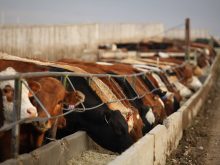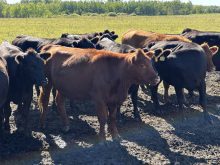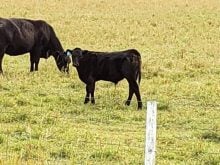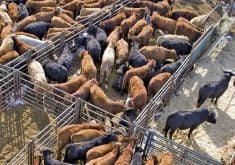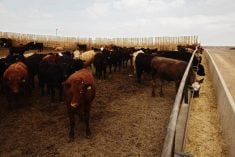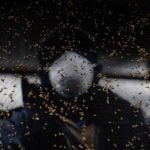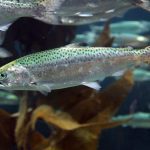Stéphane Guay produces beef and cash crops on his farm in southwest Quebec, but there is so much more happening on this 400-acre regenerative agriculture operation he’s been developing over the past few years.
Yes, there are cattle and crops, but they’re just part of a diversified farming operation that includes a wide range of practices aimed at reducing the farm’s environmental footprint, improving animal welfare, increasing biological biodiversity, improving soil health and increasing public awareness of sustainable farming practices.
His efforts to develop Ferme Guayclair Inc. with a holistic farming approach earned him recognition in 2022 as the Quebec Cattle Producer’s Environmental Stewardship Award recipient. Ferme Guayclair is located at Brownsburg-Chatham, about 100 km northwest of Montreal.
Read Also

Gentle treatments for pain in the neck
Heading toward year-end, people unknowingly tense up against the cold and busyness, causing neck pain that can often be treated with appropriate support and gentle mobility, athletic therapist Kathlyn Hossack says.
“As I began farming, I wanted to do things differently than everyone else,” says Stéphane, who started out with a dairy farm and cash crops in 2004 before transitioning to the beef/cash crop operation in 2019. His approach is to apply a wide range of livestock and crop management practices that complement each other and benefit the environment.
From dairy production to beef
Stéphane runs an 85-head crossbred cow-calf operation, with all calves finished on the farm, processed at a local federally inspected abattoir, and the beef marketed through an on-farm retail outlet and farmers markets.
The cattle spend most of their year in an intensively managed rotational grazing system that begins with calving on pasture in late May and June and continues with grazing a wide range of perennial and annual forages and crop residue right through to mid- to late December “maybe someday, even into January,” before being moved indoors for the remainder of the winter feeding program.
That beef management program is a departure from a more common practice of feeding beef animals indoors and/or in a feedyard. “Again, I wanted to do something different,” Stéphane says. “I believe it is better for the animals if they can be out on pasture. I like seeing them out on pasture and so many people who come by the farm like to see them out as well.” Also, running cattle on pasture for about seven months of the year is a much more efficient way of returning nutrients to the soil.
Stéphane produces about 217 acres of annual cash crops, including corn, soybeans and wheat. There are about 52 acres of perennial pasture, another 37 acres of annual pasture and 96 acres of hayland. He’s adopted a regenerative agriculture approach. Key elements involve zero-till cropping practices, increasing plant biodiversity and working to keep some type of crop or vegetative material green and growing on the soil at all times right up until freeze-up.
Hay and pastureland are seeded to perennial forages. He uses several different crop species for annual pasture as well as for intercropping and cover cropping.
The 37 acres of annual pasture are seeded to two different blends. About half the area is seeded to a cover crop blend that includes, oats, peas, sun hemp, sunflower, crimson clover, lablab (a forage legume that grows similar to sweet pea) and radish.
“Everything in the blend has a purpose,” says Stéphane . “There are several different rooting structures, there are legumes to feed the soil, and flowering species that benefit pollinators and they all produce feed for cattle.”
The other half of the annual pasture is seeded to a blend, often just the leftovers from the spring seeding operations. That could include a combination of soybeans, corn, oats, and wheat.
“I am just learning as I go and there isn’t a lot of research, so I try different combinations, run my own trials to see what might work,” he says.
Keep the ground covered
Cover crops fit into the program as wheat and soybeans are harvested. As the wheat is combined in August, Stéphane seeds a similar seven-species forage blend as he used in the first annual pasture mix, but also adds some pearl millet. Since soybeans are harvested a bit later, he is looking for cover crops that are faster growing and can also fix nitrogen (those soybean acres will be seeded to corn and wheat the following season). The cover crop following soybeans can include peas, clover, hairy vetch and oats.
On the corn acres, he uses an intercrop blend. After the corn is seeded on 30-inch rows and established, he comes back when the corn is at the four- to five-leaf stage and seeds a blend of crimson clover, annual ryegrass and tillage radish between the corn rows.
“The idea is to keep something green and growing on these acres right through to the end of the growing season,” Stéphane says. “Above ground, these crops are producing feed for cattle and below ground they are feeding the soil microbes, helping to build the soil.” While his earlier farming practices included tillage, soil organic matter declined. Since he switched to zero till soil, organic matter is beginning to rebuild.
The cows calve on pasture in late May and June, with the rotational grazing season usually starting on permanent pasture around June 1. Depending on the growing season, the cow herd is moved into new grazing, usually every day. Stéphane actually manages two grazing herds. The cow-calf pairs move through pastures first, while the herd of yearlings follow behind about 30 days later.
“The actual move interval depends on the animals and the growing conditions,” says Stéphane.”I want to make sure forages have a chance to recover before they are grazed again.” Depending on the growing season cattle may move through the rotation three or four times during the year.
The basic grazing plan is to start on the perennial pastures, move into the annual pastures later in the summer, and then the cover crop and intercrop seedings in the fall. Hopefully, the forage supply will allow cattle to remain on pasture until at least late December.
While the business of Ferme Guayclair is to be a profitable operation to produce crops and beef, Stéphane says the broader, long-term plan is to improve soil health and to benefit the environment. “It is a whole systems approach,” he says. “It is a circle — each aspect of the farming operation works with and benefits another.”
With several conservation measures being applied, Stéphane wants the farm to become carbon neutral within the next three years, thereby making a difference in the drive towards more sustainable agriculture.



